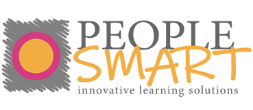If you are a Human Being reading this article then you are at the right place to understand why belonging to a community is important for each one of us!
From childhood our life is built around them: first, our family, then friends with common interests or passions, then colleagues or professionals that share the same experiences or knowledge and many more in other fields of our life. I am sure you see what I mean here: communities are essential for all humans.
And learning capabilities is no exception.
Learning is necessary and important for each person individually, but it also has many benefits in the business environment – among many other factors it contributes to improved performance. Below I would like to look at WHY to buil a learning community, WHAT is done in it and the ADVANTAGES of creating them.
1. WHY is it important to build Learning Communities in your organization?
- Learning is an experience!
Do you agree? When you learn something new there is nothing better than putting it into practice. If you are just trying to memorize theoretical concepts, you might not remember a lot. However, if you try and fail and try again the things you theoretically learnt then you are truly learning. And of course, if you succeed in your trials, this is the best part! - Learning communities improve motivation, collaboration and knowledge-transfer
What if your learning experience could be shared with a group of colleagues in a safe environment where everyone can share their own practices? Belonging to a community is essential when learning something: we all are “in the same boat”, we can help each other, there is strong solidarity that is naturally created. The people with whom you are sharing this experience are bound to you in some way. Have you ever experienced this?
In your organization, if you can create learning communities around specific topics it will definitely reinforce your employees’ motivation and collaboration. At Hewlett Packard an informal community of practice emerged around a customer software: employees scheduled a monthly call where attendance was not mandatory. People could come if they were willing to come and available. Thanks to this community, the software significantly evolved and attendance to the monthly meeting was steady, showing the attachment that employees had in this community and the will to help each other to make things better.
Finally, another great reason to build learning communities is the knowledge transfer from one person to another (known as “peer-to-peer” learning). When you create learning communities on specific topics within your organization you are also mixing profiles and experiences. This is a wonderful way to encourage and support internal knowledge-transfer. This was the case for the US airline company JetBlue which implemented a program with senior employees transferring their knowledge to other employees (program was named “JetBlue Scholars”) and resulted in 86% of employees who felt more engaged and 96% willing to stay in the company.
2. WHAT is done in a learning community?
Wenger defined several activities that can be done within a “community of practice” which can also be a learning community. Here are some of them:
- Problem-solving
- Searching for information
- Sharing of experiences
- Identifying gaps
- Growing confidence
- Brainstorming innovative ideas
- Developing critical thinking
All these activities cannot be done only at an individual level. If you need to solve specific issues for your business you could create a community of practice around the topic to collectively find and test the solutions.
3. What are the ADVANTAGES of learning communities?
The list of advantages can be very long and here are only just a few ones:
- Diversity (views, knowledge, people)
- Take a step back on your own practices and knowledge
- Engagement & motivation
- Integration and satisfaction (promotions in schools
- Friendships
- Opportunity to know and work with people you might have not had the chance to meet otherwise
- Take ownership of your learning (involvement)
4. HOW can I implement learning communities in my organization?
The good news is that you don’t need much to build a learning community! The only thing you have to do is find a topic and create a group of people that are interested in it. Of course, it can start with a “formal” training with an expert, but it is certainly not the only way – the key point is to make people regularly interact and share ideas and experiences on the topic of interest.
Another good news is that you don’t need to have physical communities; people can work digitally (even if the benefits of physical meetings are proved in terms of people’s emotional connections) the key here is that you make sure they have the available tools to communicate properly.
If your learning communities start with a “formal face-to-face” training then make sure that you’ll have at least one facilitator to encourage and bring dynamism within the community.
Do you want to go further? I suggest you read articles and books from Etienne Wenger who has studied in detail the concepts of communities of practice.
PeopleSmart has significant experience in thought partnership, design and delivery of learning community solutions, so if you would like to know how we could help you build your culture and communities around learning, and so much more, it all starts with a conversation.






